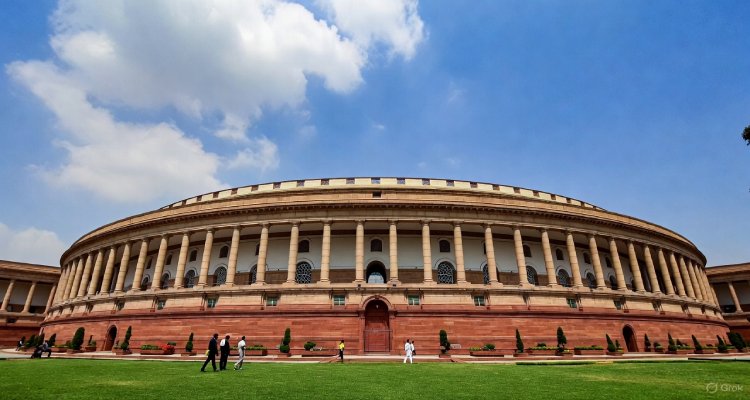6.5 Million EVs Operating on Indian Roads: Delhi, Maharashtra, and Chandigarh Lead in India Electric Mobility Index 2024
India’s EV ecosystem is booming with 6.5 million vehicles on the road and Delhi, Maharashtra, Chandigarh leading in NITI Aayog’s Electric Mobility Index 2024.
The electric vehicle (EV) landscape in India is witnessing a remarkable surge, with over 6.5 million EVs on Indian roads as of June 2025. This milestone comes alongside the release of NITI Aayog’s inaugural India Electric Mobility Index (IEMI) 2024, which highlights Delhi, Maharashtra, and Chandigarh as the frontrunners in the nation’s transition toward sustainable transport.
Transforming India’s Mobility Future
Just a few years ago, electric vehicles were a niche segment, comprising a mere 0.5% of total vehicle sales in 2018. However, by 2024, EVs accounted for 7.7% of new vehicle sales, signaling a profound shift in consumer adoption and industry focus. In 2024 alone, over 12 lakh (1.2 million) new EVs were registered, with private adoption of electric two-wheelers and cars reaching 5.3% market share. This growth reflects a broader transformation in India’s e-mobility ecosystem, driven by evolving policies, infrastructure development, and consumer awareness.timesofindia.indiatimes
Structured State-Level Progress: The India Electric Mobility Index
To monitor and foster this rapid evolution, NITI Aayog, in partnership with WRI India, developed the India Electric Mobility Index (IEMI) — a comprehensive framework evaluating the EV ecosystem across all states and Union Territories. The IEMI assesses 16 indicators grouped into three core themes:
-
Transport Electrification Progress
-
Charging Infrastructure Readiness
-
EV Research and Innovation Status
This data-driven index uses open and government datasets to provide transparency and benchmark progress, enabling peer learning and targeted policy interventions. It encourages coordinated state-level efforts and draws attention to region-specific challenges and opportunities, thereby accelerating India’s national electric mobility goals.niti+1
State Ecosystems Leading the Charge
The 2024 IEMI results spotlight Delhi, Maharashtra, and Chandigarh as leaders, credited for building robust EV ecosystems. Delhi and Maharashtra particularly excel in transport electrification, reflecting high adoption rates and policy support. Meanwhile, Haryana, Karnataka, Ladakh, and Himachal Pradesh have been recognized for their readiness and advancement in charging infrastructure—an essential enabler for widespread EV adoption. Additionally, states like Tamil Nadu, Telangana, Karnataka, and Haryana shine in EV research and technological innovation, showcasing vibrant innovation ecosystems.ptinews+1
Expert Views and Public Momentum
Rajiv Gauba, Member of NITI Aayog, emphasized the index’s role in providing a transparent and comparative assessment framework for states, facilitating integrated planning and cross-sector collaboration. The index not only identifies strengths and gaps but also helps channel public funds more efficiently and attract private investments to scale e-mobility solutions effectively.timesofindia.indiatimes
The public continues to respond positively to electric vehicles, encouraged by improving infrastructure, attractive state-level incentives, and the growing environmental consciousness. Charging infrastructure, crucial to user confidence, has expanded significantly, with more than 25,000 public chargers installed nationwide by late 2024, led by Karnataka.timesofindia.indiatimes
Implications and the Road Ahead
India’s journey toward electric mobility marks a critical pillar in its climate action and sustainable development agenda. The rapid adoption of EVs and supportive frameworks like the IEMI signal significant economic and environmental benefits, including reduced urban pollution and decreased dependence on fossil fuels.
States ranked highly are expected to continue receiving private sector interest and funding, incentivizing further innovation and rollout of EV technology. Meanwhile, lagging regions can leverage insights from the index to refine strategies, address infrastructural gaps, and align local policies with national objectives.
Looking forward, the IEMI will be a continuous benchmark, driving policy fine-tuning and cross-state collaboration to realize a cleaner, greener transport future for India.
Conclusion
With over 6.5 million electric vehicles already operating on its roads and a sophisticated monitoring framework in place, India is well on its way to a sustainable mobility revolution. Delhi, Maharashtra, and Chandigarh’s leadership exemplifies how targeted policies, infrastructure development, and innovation can accelerate this transformation. As more states adopt tailored policies and improve infrastructure readiness, India’s electric mobility vision moves closer to becoming a mainstream reality, promising cleaner air, energy security, and economic growth.
Disclaimer: This article is based on data from NITI Aayog’s India Electric Mobility Index 2024 report and publicly available government sources as of August 2025.











